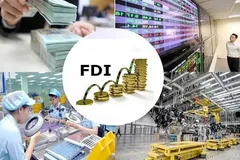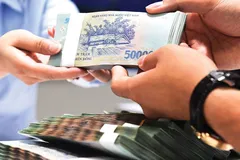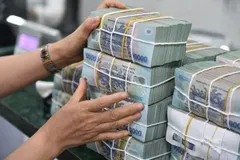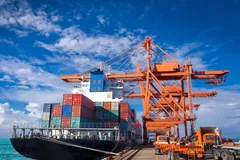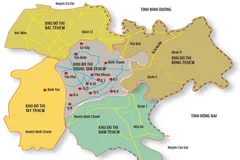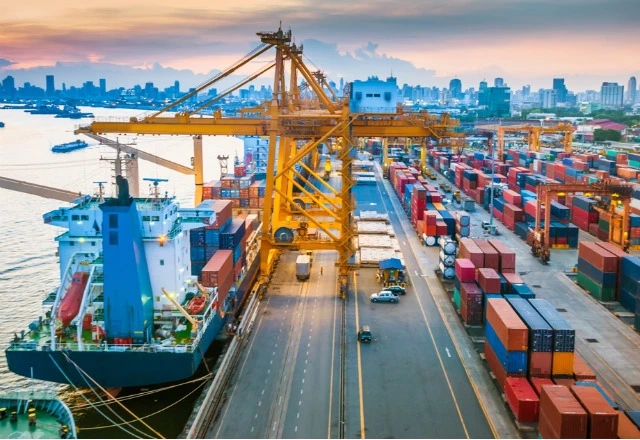
Overblown Fears of "Trump 2.0"
Vietnam holds the third-largest trade surplus with the U.S., raising concerns, especially with former President Donald Trump’s recent announcement of a proposed 25% tariff on imports from Canada and Mexico and an additional 10% tariff on Chinese exports. Coupled with Vietnam’s $100 billion trade surplus with the U.S., fears have emerged that Vietnam might become the next target.
However, Trump’s stated objectives primarily focus on two goals: reshoring manufacturing jobs to the U.S. and reducing the trade deficit. Addressing the trade deficit, Vietnam’s government unveiled plans to reduce its surplus with the U.S. by purchasing liquefied natural gas (LNG) and aircraft. Industry experts estimate that Vietnam could start importing around $30 billion worth of LNG annually from the U.S., diversifying its energy sources while addressing trade concerns.
As for reshoring manufacturing, high wages and a limited supply of skilled labor in the U.S. make it economically impractical to relocate the production of “Made in Vietnam” products there. The primary bipartisan concern in Washington lies in transshipment—Chinese goods routed through Mexico or Vietnam to circumvent U.S. tariffs.
A recent bipartisan group of U.S. senators urged President Biden to address “China’s exploitation of Mexico as a transshipment hub.” However, a Harvard University study estimates that only 2% of Vietnam’s exports to the U.S. are transshipped goods from China. This suggests that Vietnam’s trade risks with the U.S. have been significantly overstated. Moreover, Vietnam’s proactive trade policies and commitment to compliance with international trade agreements further reduce these risks.
Export Growth Fuels GDP
Exports to the U.S. surged by over 20% in 2024, rebounding from a 10% decline in 2023. This growth was a crucial driver of Vietnam’s GDP expansion last year, primarily fueled by a 40% increase in electronic and high-tech product exports to the U.S. Such growth underscores Vietnam’s strategic role in global supply chains, particularly in technology sectors.
However, we project that export growth to the U.S. will slow in 2025, partly due to the anticipated “soft landing” and economic deceleration in the U.S. Other contributing factors include shifts in the U.S. inventory replenishment cycle and pre-emptive stockpiling in Asia ahead of a potential second Trump presidency. This frontloading of demand in 2024 may lead to weaker demand in 2025.
As a result, Vietnam’s manufacturing growth—which is heavily export-driven—is expected to decelerate in 2025. Nonetheless, we do not foresee a sharp decline in exports or manufacturing. Stable FDI inflows ensure that new factories continue to commence operations and contribute to export volumes. Vietnam’s ability to attract global investors remains a testament to its favorable business environment and skilled workforce. While growth may slow, Vietnam’s manufacturing sector is likely to maintain solid performance in 2025, supported by diversification into new markets and sectors.
Consumer Spending on the Rebound
Domestic consumer sentiment has been weak, affecting Vietnam’s economic growth in 2023 and 2024, though there were signs of recovery last year, according to local consumer research firms such as Cimigo and InFocus Mekong Research. With consumption accounting for over 60% of Vietnam’s economy (compared to manufacturing’s 25%), a robust rebound in consumer spending could offset declines in export and manufacturing growth, as well as a potential dip in tourist arrivals.
The government’s increased infrastructure spending in 2025 is expected to bolster consumer confidence. Key projects like Long Thanh International Airport and Hanoi’s new ring roads symbolize progress and modernization, potentially inspiring optimism among the populace. However, we believe the real catalyst for a significant recovery in consumer spending will be the government’s decisive measures to revive the real estate market. A rebound in real estate would have a far greater impact on consumer sentiment than infrastructure spending. While infrastructure investment accounts for roughly 6% of GDP, its moderate increase alone is unlikely to drive substantial economic growth.
The combination of progress on major projects and a real estate recovery could restore consumer confidence through the “wealth effect,” tied to the perceived value of urban properties owned by many middle-class Vietnamese. Additionally, real estate recovery often triggers increased employment and spending across multiple sectors, creating a ripple effect that benefits the broader economy.
The Vietnamese economy and stock market are likely to experience volatility in 2025. In the first half of the year, slower export growth may exert more significant pressure on GDP than many economists currently anticipate. This slowdown could prompt aggressive government actions to support the economy, especially given Vietnam’s ambitious GDP growth targets.
Monetary and fiscal policy adjustments are expected to play a central role in mitigating these challenges. Interest rate cuts and targeted support for key industries could provide much-needed relief. Additionally, initiatives to streamline administrative processes for businesses, particularly in export-driven sectors, may enhance overall economic efficiency.
Furthermore, Vietnam’s commitment to green energy and sustainable development is set to attract new waves of investment. Projects focusing on renewable energy, such as solar and wind power, align with global trends and position Vietnam as a leader in the transition to sustainable practices. These efforts not only boost economic growth but also reinforce Vietnam’s reputation as a forward-thinking and responsible member of the global community.
In conclusion, while Vietnam faces a challenging economic landscape in 2025, the combination of steady FDI inflows, strategic government interventions, and recovering consumer confidence provides a solid foundation for continued growth. Despite potential headwinds, Vietnam remains well-positioned to navigate the uncertainties of the coming year. By leveraging its strengths, addressing its vulnerabilities, and fostering innovation, Vietnam can maintain its trajectory as one of the most dynamic economies in the region.






